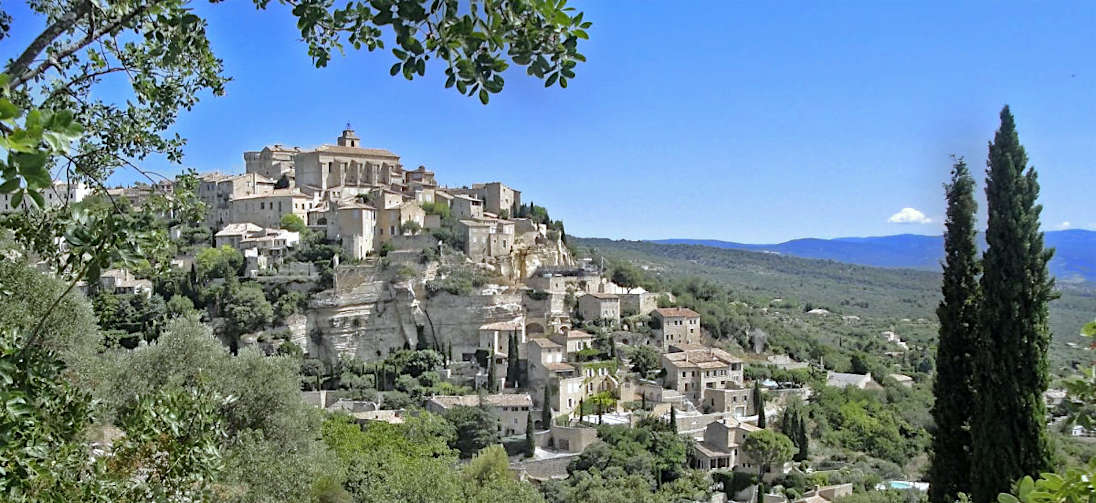
A short guide to Provence
About-Provence.com
the
Gitelink guide to France's Mediterranean heartland
- Explore Provence ►
- Essential pages
- Where to go
- Where to stay
Provence, France's most popular tourist region
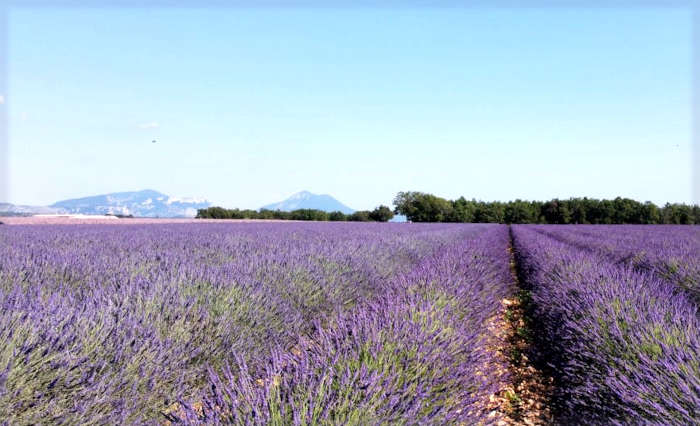
Lavender field in Provence
While some of the emblematic icons of Provence - the lavender fields or the Mont Saint Vincent so often painted by Cézanne - are or seem specifically attached to this region,others including the olive trees, the dry rocky coastline with its scented stunted pine trees, the evening air filled with the chi-chi-chi of a thousand crickets, and even the villages and vineyards, are actually features that characterise large stretches of the Mediterranean coast and its hinterland, in both France and other countries.
So what is it that distinguishes Provence from the rest, and gives it that special stature that it seems to have not just for foreigners, but even for many of the French themselves ?
Provence history - In the beginning
In the beginning there was Provence. Long before France existed, around 600 B.C., the Phocaeans, Greeks from the city of Phocaea in Asia Minor, established a prosperous Mediterranean seaport known as Massilia, today's Marseilles. The Phocaeans are not to be confused with the Phoenicians, great seafarers who possibly had a settlement on the same spot even earlier. The Greek colony of Massilia eventually came under Roman rule, and it was the Romans who gave this region the name by which it has been known for much of the time since then. In the second century, "Gallia Narbonensis", the Roman province covering the south of France from the Pyrenees to the Alps, was so important, and sufficiently close to Rome that it was known in everyday speech as "Provincia", "the province". Or as we know it in modern French, "La Provence".With time, the name became definitively attached to the eastern part of Gallia Narbonensis, the area to the east of the Rhone, whose capital was a town called Aquae Sextiae, the town now known as Aix-en-Provence.
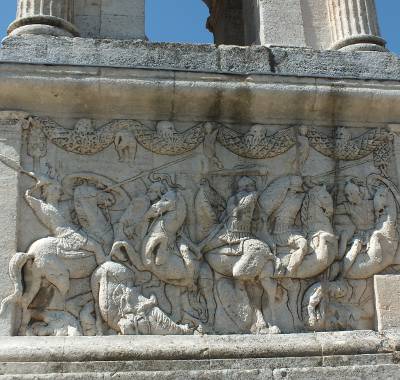
Carvings on the Roman triumphal arch at Glanum,
on the old Via Domitia, historically in Provence, but west of the Rhone
Until the fifteenth century, Provence did not belong to France; after the demise of the Roman empire, it was one of those regions that was fought over continuously; the coastal areas in particular were occupied in their time by Visigoths and Ostrogoths, as well as by Catalans and Moors. In the age of Charlemagne, the great European emperor and contemporary of England's King Alfred, Provence formed the southern part of the "middle empire". In the late Middle Ages, the city of Avignon and the area around it belonged to the Popes, who established their palace there. Most of Provence was incorporated into France in 1486.
So in historical terms, Provence is older than France itself, and was a centre of culture learning and commerce long before Paris and northern France acquired the territorial importance that they have today.
Provence: territory and economy
Definition: this presentation covers all areas that are included within the modern administrative region based on Marseilles, plus the area just to the west of the Rhone that is historically and culturally attached to Provence. Cassis, on the Provence coast east of Marseilles
Cassis, on the Provence coast east of Marseilles The population is concentrated largely on the coastal strip and in the Rhone valley. Away from these, into the hills and the mountains of high Provence, there are no big cities, and even small towns are few and far between. The largest cities in this region are Marseilles, Nice, Toulon and Avignon.
Click here for Provence regional guide
Language and Culture
Foreign visitors who learned French at school may find the language of Provence difficult to understand; many people here speak French with a strong regional accent, a reminder that the traditional language of a large part of this region is not French at all, but Provençal, a south-European language resembling Catalan or Spanish more closely than it resembles the French spoken in Paris or the north of the country. In many towns and cities, street names and other signs are written in both French and Provençal.
In the east of the region, towards Nice and the Italian border, local dialects and culture are much closer to Italian .
Overall, the cultural heritage of this region is profoundly Mediterranean.
Many great French writers and artists have come from or lived in Provence; Frederic Mistral is to Provence what Robert Burns is to Scotland, an iconic national poet who wrote in the local language - in this case Provençal. Other emblematic Provencal writers include the 19th century heavyweight Alphonse Daudet, author of the classic "Lettres de mon Moulin", Marcel Pagnol, and the twentieth century novelist Jean Giono, whose works portray rural life in Provençal Alps. Since the 19th century, many artists have chosen to live in Provence, on account of the light; but Paul Cézanne, one of the greatest of the Impressionists, was actually a native of Aix en Provence.
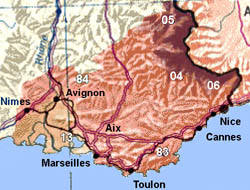
Provence region, covering the French Riviera, the Provence Alps, historic Provence and the area historically linked to Provence
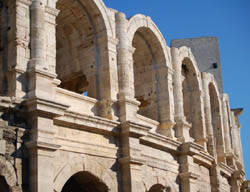
Roman Provence - the Arles arena.
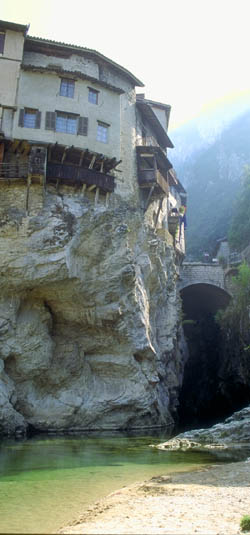
Upper Provence
 A Gitelink
guide
A Gitelink
guide| Other useful resources |
| Provence online resources |
| Aix en Provence tourist office |
| Gites and villas - interactive map |
| Regional tourist office |
| Driving in France |
| Bed and breakfast in France |
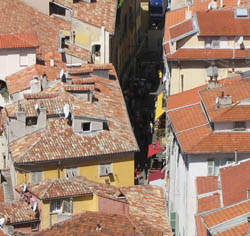
Provençal roofs
About-Provence.com,
created by Gitelink, is part of the About-France.com network.
Gitelink is a fully independent website working directly with owners but also affiliated to certain online booking platforms. Gitelink takes no commission on rentals made directly with owners, but may receive a small commission on bookings made through affiliated rental sites . This has no effect at all on the price paid by the visitor.
Gitelink is a fully independent website working directly with owners but also affiliated to certain online booking platforms. Gitelink takes no commission on rentals made directly with owners, but may receive a small commission on bookings made through affiliated rental sites . This has no effect at all on the price paid by the visitor.
Copyright:
Website and text © Gitelink.com renewed 2025
.
